-
 Bitcoin
Bitcoin $107,461.2530
0.65% -
 Ethereum
Ethereum $2,425.6945
-0.64% -
 Tether USDt
Tether USDt $1.0003
-0.01% -
 XRP
XRP $2.1844
4.49% -
 BNB
BNB $646.3777
0.36% -
 Solana
Solana $146.6972
3.90% -
 USDC
USDC $1.0000
0.00% -
 TRON
TRON $0.2744
1.17% -
 Dogecoin
Dogecoin $0.1631
1.28% -
 Cardano
Cardano $0.5609
1.22% -
 Hyperliquid
Hyperliquid $37.0726
2.08% -
 Bitcoin Cash
Bitcoin Cash $497.3222
-0.12% -
 Sui
Sui $2.7220
3.19% -
 Chainlink
Chainlink $13.1487
0.79% -
 UNUS SED LEO
UNUS SED LEO $9.0787
0.68% -
 Avalanche
Avalanche $17.6542
1.11% -
 Stellar
Stellar $0.2377
1.49% -
 Toncoin
Toncoin $2.8426
0.81% -
 Shiba Inu
Shiba Inu $0.0...01140
1.72% -
 Litecoin
Litecoin $85.2565
0.62% -
 Hedera
Hedera $0.1475
2.69% -
 Monero
Monero $314.1893
2.28% -
 Bitget Token
Bitget Token $4.6752
0.90% -
 Dai
Dai $1.0001
0.02% -
 Polkadot
Polkadot $3.3425
1.28% -
 Ethena USDe
Ethena USDe $1.0001
0.02% -
 Uniswap
Uniswap $6.9500
1.23% -
 Pi
Pi $0.5304
-3.13% -
 Pepe
Pepe $0.0...09311
0.91% -
 Aave
Aave $254.6674
-1.33%
What decentralized trading platforms are there? Is it safe?
DEXs like Uniswap and SushiSwap offer direct crypto trading via blockchain, enhancing user control and privacy, but users must manage their own funds and be aware of smart contract risks.
May 12, 2025 at 02:00 pm
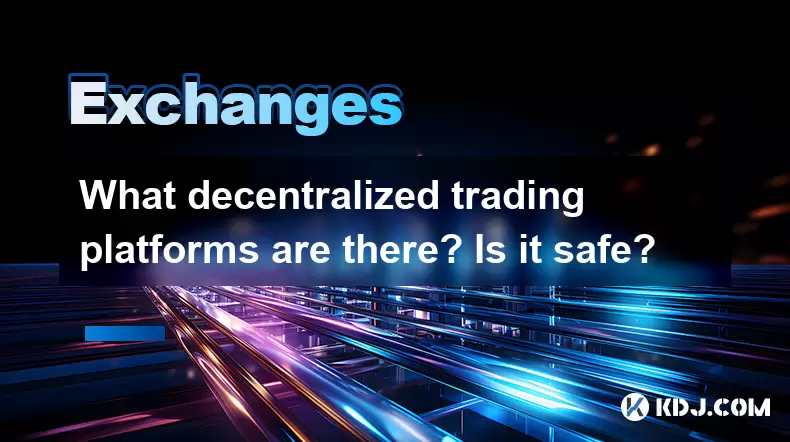
Decentralized trading platforms, often referred to as decentralized exchanges (DEXs), have become increasingly popular in the cryptocurrency space. These platforms operate on blockchain technology, allowing users to trade cryptocurrencies directly with one another without the need for a central authority. In this article, we will explore some of the most notable decentralized trading platforms and discuss their safety features.
Understanding Decentralized Exchanges
Decentralized exchanges differ from traditional centralized exchanges in several key ways. Firstly, DEXs do not hold users' funds. Instead, users maintain control over their assets in their own wallets. Secondly, DEXs use smart contracts to facilitate trades, ensuring that transactions are executed automatically and transparently on the blockchain. This removes the need for intermediaries, reducing the risk of hacks and fraud. Lastly, DEXs typically offer greater privacy as users do not need to go through extensive KYC (Know Your Customer) processes.
Notable Decentralized Trading Platforms
Several decentralized trading platforms have gained prominence in the cryptocurrency community. Here are some of the most notable ones:
Uniswap: Uniswap is one of the most popular DEXs, built on the Ethereum blockchain. It uses an automated market maker (AMM) model, where users can trade tokens directly from their wallets. Uniswap is known for its ease of use and wide range of supported tokens.
SushiSwap: SushiSwap is a fork of Uniswap, offering similar functionality but with additional features like yield farming. It also operates on the Ethereum blockchain and has become a favorite among DeFi enthusiasts.
PancakeSwap: Built on the Binance Smart Chain, PancakeSwap is another AMM-based DEX. It is known for its low transaction fees and fast transaction times, making it a popular choice for those looking to trade on a budget.
Curve Finance: Curve Finance is a DEX that specializes in trading stablecoins with minimal slippage. It is built on the Ethereum blockchain and is favored by traders looking for efficient stablecoin swaps.
1inch: 1inch is an aggregator DEX that sources liquidity from multiple DEXs to offer users the best possible trading rates. It operates on the Ethereum blockchain and is known for its sophisticated routing algorithms.
Safety Features of Decentralized Trading Platforms
Safety is a primary concern for users of any trading platform, and DEXs are no exception. Here are some key safety features that many decentralized trading platforms offer:
Non-Custodial Wallets: As mentioned earlier, DEXs do not hold users' funds. This means that users maintain control over their assets, reducing the risk of theft or loss due to exchange hacks.
Smart Contract Audits: Many DEXs undergo regular smart contract audits by reputable firms. These audits help identify and fix potential vulnerabilities in the smart contracts that power the platform.
Decentralized Governance: Some DEXs employ decentralized governance models, where users can vote on proposed changes to the platform. This ensures that the platform evolves in a way that aligns with the community's interests and enhances security.
Liquidity Pool Insurance: Some platforms offer insurance for liquidity providers, protecting them against potential losses due to smart contract exploits or other unforeseen events.
How to Use a Decentralized Trading Platform
Using a decentralized trading platform involves several steps. Here is a detailed guide on how to trade on Uniswap, one of the most popular DEXs:
Connect Your Wallet: Navigate to the Uniswap website and click on the "Connect Wallet" button. Choose your preferred wallet, such as MetaMask, and follow the prompts to connect it to Uniswap.
Select Tokens to Trade: Once your wallet is connected, you can select the tokens you want to trade. Enter the amount of the token you wish to swap and choose the token you want to receive in exchange.
Review and Confirm the Transaction: Uniswap will display the estimated amount of tokens you will receive, along with the transaction fee. Review this information carefully, and if everything looks correct, click on the "Swap" button. Confirm the transaction in your wallet.
Wait for the Transaction to Complete: After confirming the transaction, you will need to wait for it to be processed on the Ethereum blockchain. This can take a few minutes, depending on network congestion.
Check Your Wallet: Once the transaction is complete, check your wallet to ensure that you have received the swapped tokens.
Potential Risks and Considerations
While decentralized trading platforms offer numerous benefits, they also come with certain risks that users should be aware of. Here are some potential risks and considerations:
Smart Contract Vulnerabilities: Despite regular audits, smart contracts can still have vulnerabilities that hackers can exploit. Users should always research the security track record of a DEX before using it.
Liquidity Risks: Some DEXs may suffer from low liquidity, which can result in higher slippage and less favorable trading conditions. It's important to check the liquidity of the tokens you wish to trade.
User Error: Since users are responsible for managing their own wallets and transactions, there is a higher risk of user error. For example, sending tokens to the wrong address or approving transactions with excessive permissions can lead to loss of funds.
Regulatory Uncertainty: The regulatory landscape for decentralized exchanges is still evolving. Users should be aware of the legal implications of using DEXs in their jurisdiction.
Frequently Asked Questions
Q: Are decentralized exchanges better than centralized exchanges?
A: Decentralized exchanges offer greater control over funds and privacy, but they can be less user-friendly and may have higher transaction fees. The choice between DEXs and centralized exchanges depends on individual preferences and trading needs.
Q: Can I use a decentralized exchange on my mobile device?
A: Yes, many decentralized exchanges have mobile-friendly interfaces or dedicated apps. For example, Uniswap can be accessed through a mobile browser, and MetaMask has a mobile app that can be used to connect to DEXs.
Q: How do I know if a decentralized exchange is reputable?
A: To assess the reputation of a decentralized exchange, look for factors such as the length of time it has been in operation, the frequency and results of smart contract audits, user reviews, and the transparency of its operations and governance.
Q: What should I do if I encounter a problem while using a decentralized exchange?
A: If you encounter a problem, first check the DEX's official documentation and support channels for guidance. Many DEXs have active community forums where users can seek help. If the issue is related to a transaction, you may need to check the blockchain explorer to see the status of your transaction.
Disclaimer:info@kdj.com
The information provided is not trading advice. kdj.com does not assume any responsibility for any investments made based on the information provided in this article. Cryptocurrencies are highly volatile and it is highly recommended that you invest with caution after thorough research!
If you believe that the content used on this website infringes your copyright, please contact us immediately (info@kdj.com) and we will delete it promptly.
- Across Crypto Project Faces Heat: Secret $23M Transfer Sparks Governance Debate
- 2025-06-28 16:30:13
- Trump Coin's Wild Ride: Liquidity Drain, Exchange Deposits, and What It Means for Binance & OKX
- 2025-06-28 16:50:13
- Trump, Memecoin Mania, and Whale Watching: A New York Minute in Crypto
- 2025-06-28 16:30:13
- Shiba Inu, Lending Coins, and Early Holders: A New Frontier
- 2025-06-28 16:51:59
- Meme Coins in July 2025: Investing in the Future of Hype?
- 2025-06-28 16:51:59
- SUI's Trending Surge: Decoding the Reasons Behind the Hype
- 2025-06-28 16:55:12
Related knowledge
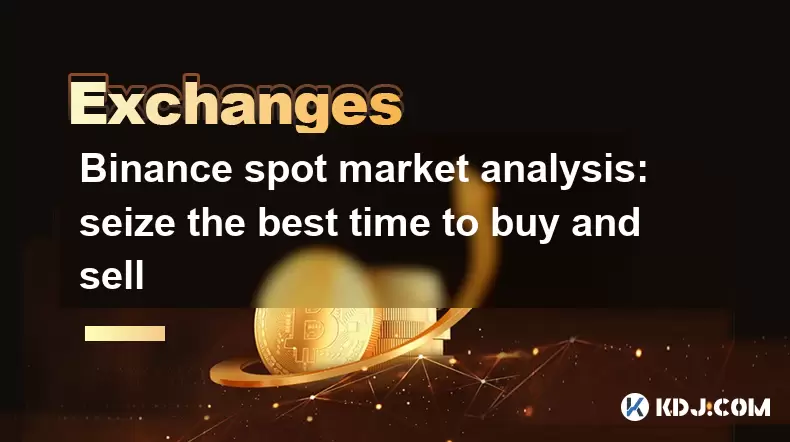
Binance spot market analysis: seize the best time to buy and sell
Jun 19,2025 at 04:56pm
Understanding the Binance Spot MarketThe Binance spot market is one of the most popular platforms for cryptocurrency trading globally. It allows users to trade digital assets at current market prices, making it essential for traders aiming to buy low and sell high. Unlike futures or margin trading, spot trading involves direct ownership of the asset aft...
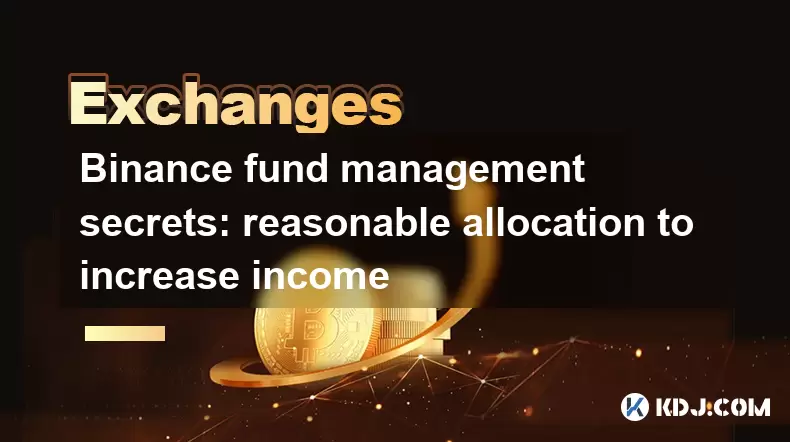
Binance fund management secrets: reasonable allocation to increase income
Jun 22,2025 at 02:29pm
Understanding Binance Fund ManagementBinance fund management involves strategic allocation of your cryptocurrency assets to optimize returns while managing risk. The key to successful fund management lies in understanding how different investment options on the Binance platform can be utilized to create a diversified portfolio. This includes spot tradin...
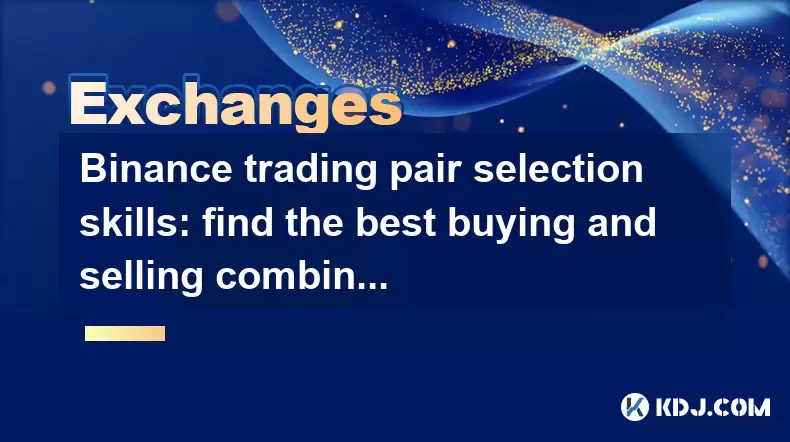
Binance trading pair selection skills: find the best buying and selling combination
Jun 23,2025 at 02:49am
Understanding the Basics of Trading Pairs on BinanceBefore diving into trading pair selection skills, it's essential to understand what a trading pair is. On Binance, a trading pair refers to two cryptocurrencies that can be traded against each other. For example, BTC/USDT means Bitcoin is being traded against Tether. Each trading pair has its own liqui...
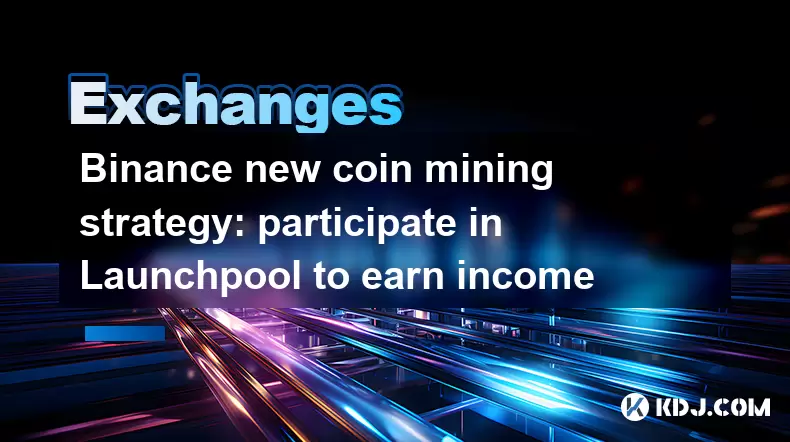
Binance new coin mining strategy: participate in Launchpool to earn income
Jun 23,2025 at 11:56am
What is Binance Launchpool and how does it work?Binance Launchpool is a feature introduced by the world’s largest cryptocurrency exchange, Binance, to allow users to earn new tokens through staking. This platform enables users to stake their existing cryptocurrencies (such as BNB, BUSD, or other supported assets) in exchange for newly launched tokens. T...
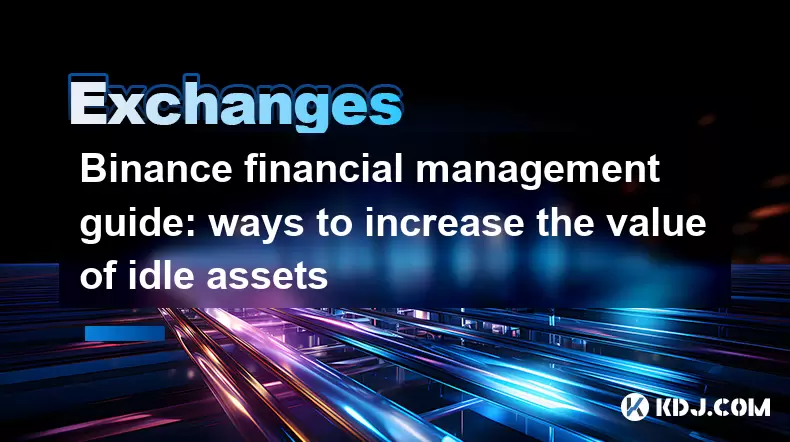
Binance financial management guide: ways to increase the value of idle assets
Jun 19,2025 at 11:22pm
Understanding Idle Assets in the Cryptocurrency SpaceIn the fast-paced world of cryptocurrency, idle assets refer to digital currencies that are not actively being used for trading, staking, or yield farming. Holding these funds in a wallet without utilizing them means missing out on potential growth opportunities. Binance, as one of the leading platfor...
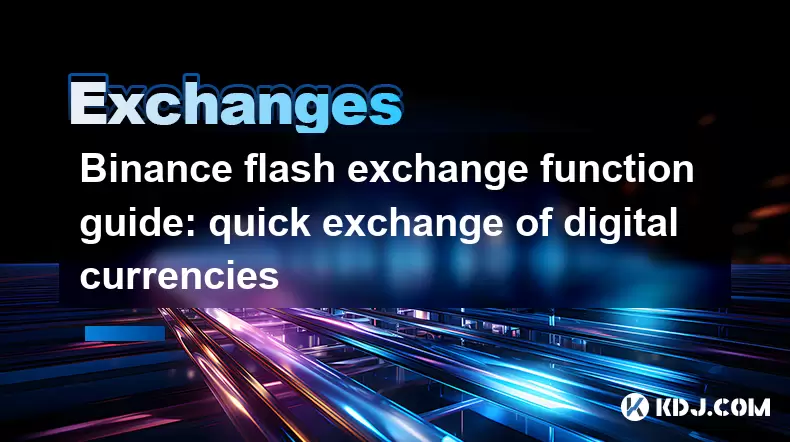
Binance flash exchange function guide: quick exchange of digital currencies
Jun 23,2025 at 12:29pm
What is the Binance Flash Exchange Function?The Binance Flash Exchange function is a powerful tool designed to allow users to instantly swap between supported cryptocurrencies without the need for placing traditional buy/sell orders. This feature simplifies the trading process by offering a direct exchange mechanism, eliminating the requirement to conve...

Binance spot market analysis: seize the best time to buy and sell
Jun 19,2025 at 04:56pm
Understanding the Binance Spot MarketThe Binance spot market is one of the most popular platforms for cryptocurrency trading globally. It allows users to trade digital assets at current market prices, making it essential for traders aiming to buy low and sell high. Unlike futures or margin trading, spot trading involves direct ownership of the asset aft...

Binance fund management secrets: reasonable allocation to increase income
Jun 22,2025 at 02:29pm
Understanding Binance Fund ManagementBinance fund management involves strategic allocation of your cryptocurrency assets to optimize returns while managing risk. The key to successful fund management lies in understanding how different investment options on the Binance platform can be utilized to create a diversified portfolio. This includes spot tradin...

Binance trading pair selection skills: find the best buying and selling combination
Jun 23,2025 at 02:49am
Understanding the Basics of Trading Pairs on BinanceBefore diving into trading pair selection skills, it's essential to understand what a trading pair is. On Binance, a trading pair refers to two cryptocurrencies that can be traded against each other. For example, BTC/USDT means Bitcoin is being traded against Tether. Each trading pair has its own liqui...

Binance new coin mining strategy: participate in Launchpool to earn income
Jun 23,2025 at 11:56am
What is Binance Launchpool and how does it work?Binance Launchpool is a feature introduced by the world’s largest cryptocurrency exchange, Binance, to allow users to earn new tokens through staking. This platform enables users to stake their existing cryptocurrencies (such as BNB, BUSD, or other supported assets) in exchange for newly launched tokens. T...

Binance financial management guide: ways to increase the value of idle assets
Jun 19,2025 at 11:22pm
Understanding Idle Assets in the Cryptocurrency SpaceIn the fast-paced world of cryptocurrency, idle assets refer to digital currencies that are not actively being used for trading, staking, or yield farming. Holding these funds in a wallet without utilizing them means missing out on potential growth opportunities. Binance, as one of the leading platfor...

Binance flash exchange function guide: quick exchange of digital currencies
Jun 23,2025 at 12:29pm
What is the Binance Flash Exchange Function?The Binance Flash Exchange function is a powerful tool designed to allow users to instantly swap between supported cryptocurrencies without the need for placing traditional buy/sell orders. This feature simplifies the trading process by offering a direct exchange mechanism, eliminating the requirement to conve...
See all articles
























































































